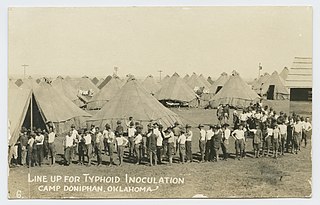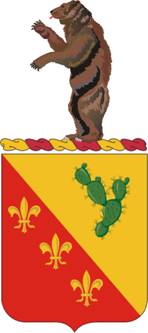Related Research Articles

The Coldstream Guards is the oldest continuously serving regular regiment in the British Army. As part of the Household Division, one of its principal roles is the protection of the monarchy; due to this, it often participates in state ceremonial occasions. The Regiment has consistently provided formations on deployments around the world and has fought in the majority of the major conflicts in which the British Army has been engaged.

The Invasion of the Kuril Islands was the World War II Soviet military operation to capture the Kuril Islands from Japan in 1945. The invasion, part of the Soviet–Japanese War, was decided on when plans to land on Hokkaido were abandoned. The successful military operations of the Red Army at Mutanchiang and during the invasion of South Sakhalin created the necessary prerequisites for invasion of the Kuril Islands.

The Royal Northumberland Fusiliers was an infantry regiment of the British Army. Raised in 1674 as one of three 'English' units in the Dutch Anglo-Scots Brigade, it accompanied William III to England in the November 1688 Glorious Revolution and became part of the English establishment in 1689.

The 32nd Infantry Brigade Combat Team is an infantry brigade combat team (IBCT) in the United States Army National Guard. It was formed from the inactivated 32nd Infantry Division in 1967. It is the largest unit in the Wisconsin National Guard.

The Hampshire Regiment was a line infantry regiment of the British Army, created as part of the Childers Reforms in 1881 by the amalgamation of the 37th Regiment of Foot and the 67th Regiment of Foot. The regiment existed continuously for 111 years and served in the Second Boer War, World War I and World War II. An Army Order of the 28 November 1946 stated, due to distinguished service in the Second World War, the regiment would be re-titled as the Royal Hampshire Regiment.
The 20th Group Army is a military formation of the People's Liberation Army Ground Force, stationed in the Jinan Military Region. It consists of two manoeuvre brigades with other attached or otherwise organic units. For some time after its formation in 1949, the army consisted of three divisions.
The 120th Regiment of Foot was an infantry regiment of the British Army, formed in 1763 by regimenting independent companies and disbanded in 1764. During its brief existence, Robert Dalrymple-Horn-Elphinstone was only the Colonel of the Regiment.

The 128th Mountain Assault Brigade is a formation of the Ukrainian Ground Forces.

Camp Doniphan was a military base adjacent to Fort Sill, just outside Lawton, in Comanche County, Oklahoma, that was activated for use in World War I for artillery training. The post was closed in 1918 and incorporated into Fort Sill.
General of Army of Ukraine Serhiy Kyrychenko was the 9th Chief of the General Staff and Commander-in-Chief of the Armed Forces of Ukraine.

The 67th Maneuver Enhancement Brigade is a maneuver enhancement brigade (MEB) of the Nebraska Army National Guard. It derives its lineage from the 67th Infantry Brigade (Mechanized), previously a component of the 35th Infantry Division (Mechanized). The brigade has also been organized as an area support group from 2003–2008, and as a battlefield surveillance brigade from 2008–2016.

The 128th Infantry Regiment is a United States military unit of the Wisconsin National Guard, currently represented by the 1st Battalion, 128th Infantry Regiment. The 128th has served as part of the American Civil War, Spanish–American War, Mexican Civil War, World War I, World War II, Iraq War and the Afghanistan War.

The 129th Field Artillery Regiment is a regiment of the Field Artillery Branch of the United States Army, part of the Missouri Army National Guard. The 1st Battalion is the only active unit of the regiment, with the battalion Headquarters and Headquarters Battery in Maryville, Battery A in Albany, Battery B in Chillicothe, and Battery D in Independence. The battalion is a subordinate unit of the 130th Field Artillery Brigade, headquartered in Manhattan, Kansas.
The 203rd Engineer Battalion is a combat engineer battalion of the Missouri Army National Guard.
The Hampshire Brigade, previously the Portsmouth Brigade and later 128th (Hampshire) Brigade, was an infantry formation of the British Army of the Volunteer Force, Territorial Force (TF) and Territorial Army (TA) in existence from 1889 until after the Second World War. It served in British India during the First World War, but not as a complete formation. During the Second World War, the 128th Infantry Brigade fought in the Tunisia Campaign, in the Italian Campaign, and later in the Greek Civil War. The brigade was composed entirely of battalions from the Hampshire Regiment.
43rd Airborne Division is one of three mobile assets of 15th Airborne Corps of the People's Liberation Army Air Force (PLAAF) of People's Republic of China, and a Rapid Reaction, Level One unit of PLAAF.
The 69th Covering Brigade is a unique border protection brigade of the Russian Ground Forces, stationed at Babstovo, Jewish Autonomous Oblast, and part of the 35th Army. Military Unit в/ч 61424.
The 120th Field Artillery Regiment is a field artillery regiment of the Wisconsin Army National Guard.
The 128th Division(Chinese: 第128师) was a military formation of the People's Liberation Army, which was created in November 1948 under the Regulation of the Redesignations of All Organizations and Units of the Army, issued by the Central Military Commission on November 1, 1948, basing on the 17th Division, 6th Column of the Northeastern Field Army. Its origin can be traced back to the 3rd Detachment of the Shandong People's Anti-Japanese Guerilla Force of the Eighth Route Army, activated in June 1938.
References
- ↑ 128th Regiment of Foot (Archived August 17, 2007, at the Wayback Machine )